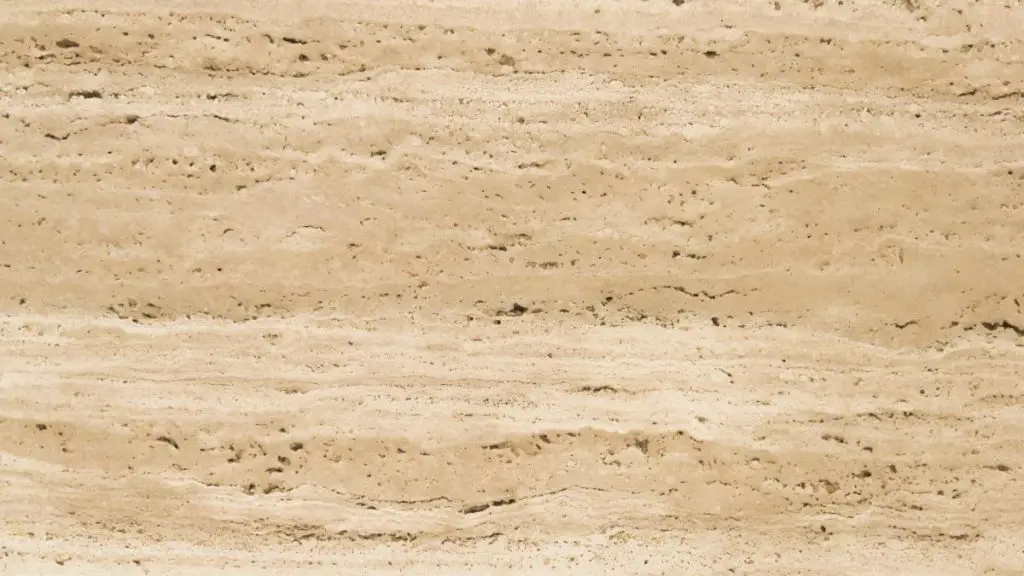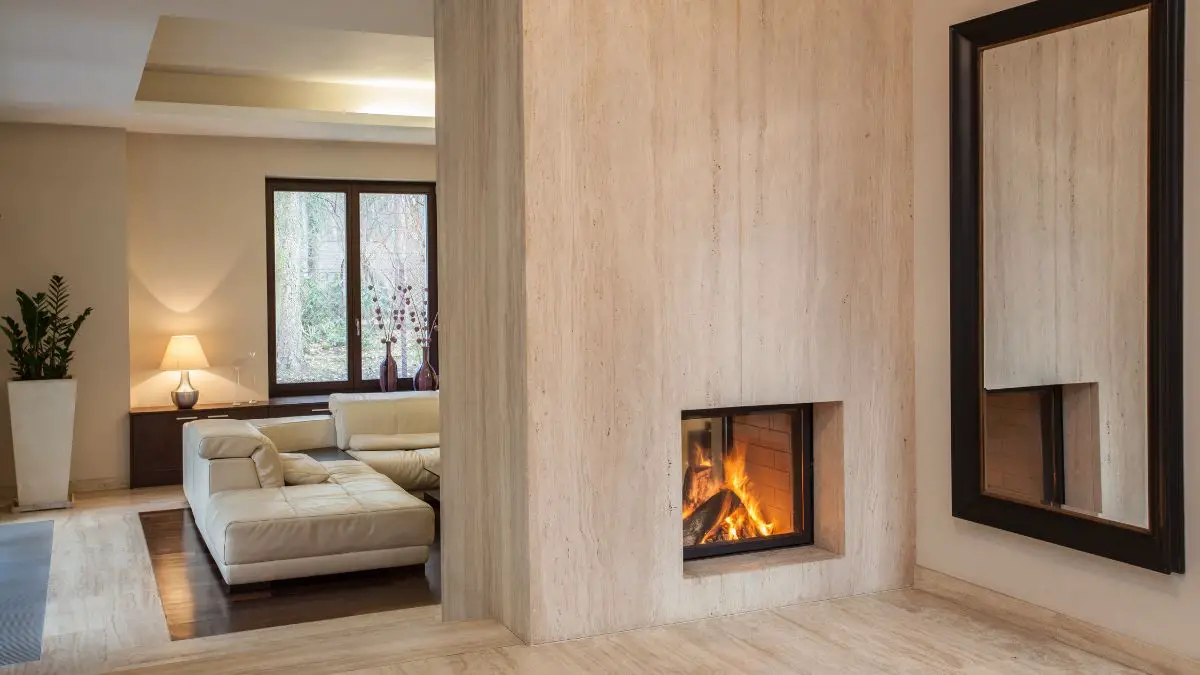Limestone and travertine are two of the most popular types of natural stone flooring. Both offer a unique, timeless look that adds elegance and charm to any living space, but which one is better for your individual needs?
In this blog post, we’ll explore the similarities and differences between limestone and travertine flooring in terms of appearance, durability, cost considerations, and environmental impact.
What Is Limestone

Limestone is a sedimentary rock composed of calcite, clay, and other materials. It’s available in various colors, from bright white to dark gray and even yellow and red.
Limestone has been used for centuries as an interior flooring material due to its durability and timeless beauty.
It’s often used in bathrooms, kitchens, and other high-traffic areas due to its ability to withstand wear and tear.
What Is Travertine

Travertine is another type of sedimentary rock made up of calcium carbonate. It’s typically softer and more porous than limestone, which makes it a great choice for interior flooring.
Its unique texture is known for its subtle earthy tones ranging from light beige to deep brown.
Travertine is also highly durable, making it an excellent choice for residential and commercial flooring projects.
Key Difference Between Limestone vs. Travertine Flooring
The key difference between limestone and travertine flooring is their porosity. Limestone is more dense than travertine, making it less likely to absorb liquids and other staining materials.
Limestone is the better choice for high-traffic areas like bathrooms or kitchens where water is often present.
On the other hand, travertine is more porous and tends to absorb liquids and stains more readily than limestone. This makes it a better option for areas with lower foot traffic as it won’t be exposed to moisture or heavy wear-and-tear.
Appearance and Durability
Color Differences
Regarding color, limestone can range from light shades of white and gray to yellow or red. Travertine also offers an array of earthy tones ranging from light beige to deep brown.
Porosity and Hardness
Regarding porosity and hardness, limestone is more dense than travertine. As a result, limestone is less likely to absorb liquids and staining materials, making it a better choice for high-traffic areas like bathrooms or kitchens where water is often present.
Travertine is more porous, which makes it a better option for areas with lower foot traffic as it won’t be exposed to moisture or heavy wear-and-tear.
Cost Considerations
Installation
The cost of installing either limestone or travertine flooring may vary significantly, depending on the material’s type, size, and quality. Generally speaking, travertine tends to be more expensive than limestone due to its unique appearance and range of hues.
Installing limestone and travertine flooring can both be expensive home remodeling projects. The cost will vary depending on the square footage of the area, as well as the materials needed for installation.
According to Home Advisor and Cost Helper, on average, you can expect to pay approximately $5-$10 per square foot to install limestone flooring, while travertine flooring typically costs a bit more, at around $10-$15 per square foot.
Both types of stone require extra preparation and special tools and materials, which may add to overall costs.
Maintenance
The cost of maintenance for both limestone and travertine flooring is relatively low.
Generally speaking, sealing the stone is required every 2-3 years to help protect it from stains and keep it looking its best. Sealing costs can vary depending on the size of the area and the type of sealant used.
In addition, both types of stone should be regularly cleaned with a damp mop or cloth to remove dirt and debris.
If proper care is taken, limestone and travertine flooring can last many years. However, if the floor is not maintained correctly, it may become damaged over time or require more frequent repairs and replacement.
Value
Regarding resale value, limestone and travertine flooring can add a unique aesthetic appeal to any home. However, due to its durability and long life span, limestone tends to be more sought after in terms of resale value.
As an added bonus, the cost of installing limestone flooring is typically less than that of travertine, making it more affordable for homeowners.
Travertine is still an attractive and desirable choice in terms of home remodeling projects. However, potential buyers may be put off by the higher cost of installation and maintenance associated with this type of flooring.
Environmental Impact
Both types of flooring are relatively eco-friendly.
Limestone is a natural stone formed by sedimentary deposits over millions of years. It is abundant and renewable and can be quarried from areas worldwide with minimal adverse environmental impacts.
Travertine is a natural stone formed over thousands of years through hot springs or limestone caves. It is abundant and renewable and can be found in many areas worldwide with minimal environmental impact.
Both types of stone are considered non-toxic and safe for indoor use. However, some quarries may use chemical treatments or other processes that can damage the environment. Therefore, it is essential to research the source of the stone before making a purchase.
In addition, both limestone and travertine are durable materials with long life spans. This means they can last many years without needing to be replaced, reducing waste and energy consumption due to manufacturing or installation.
Which Should You Choose?
Both limestone and travertine have distinct advantages and disadvantages.
Limestone may be the best choice if you want a durable and affordable flooring option. Alternatively, travertine could be the ideal option if you’re after a luxurious and elegant aesthetic.
Frequently Asked Questions
Which is better, travertine or limestone?
It depends on your personal preference and the look you are trying to achieve. For example, limestone is more affordable and durable, while travertine has a distinctive appearance and range of hues.
Which is cheaper, limestone or travertine?
Limestone is typically less expensive than travertine due to the lower installation and maintenance cost.
Is travertine tile the same as limestone?
No, travertine and limestone are two different types of stone. While both types of stone have a similar appearance, they have other characteristics and properties.
How can you tell the difference between travertine and limestone?
Travertine typically has a more porous surface with visible pores and veins, while limestone is smoother and less porous. Limestone also tends to be lighter in color than travertine.
Final Thoughts
Limestone and travertine are beautiful and durable flooring materials that can add value to any home. However, limestone is more affordable and easier to maintain than travertine, while travertine has a unique aesthetic with various tones and hues.
Ultimately, the choice between these two stones comes from personal preference, budget, and intended use. Both limestone and travertine can be considered environmentally friendly options as long as you research the source of the stone before making a purchase.
Regardless of your choice, these stones will stand the test of time and bring lasting beauty to any space.


